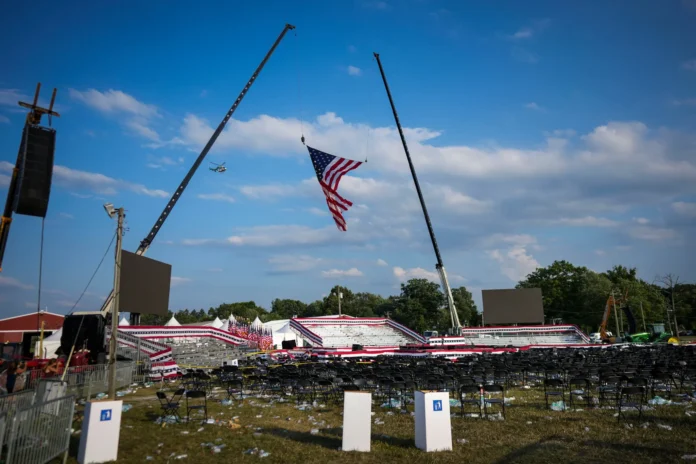During the near-assassination attempt on President Trump in Pennsylvania in July, Sean Westwood, a political scientist at Dartmouth, was conducting a survey of Americans regarding political violence.
People were afraid that the shooting would make them want more bloodshed when it happened.
In contrast, Mr. Westwood and his coworkers discovered the inverse. Support for partisan violence, and murder in particular, declined in the weeks following the attack, with the biggest decline among Republicans who identify with Mr. Trump.
The authors write in an upcoming article in The Proceedings of the National Academy of Sciences that “an assassination attempt did not inflame the tensions,” despite the fact that Americans are still very antagonistic toward those who differ with them on politics.
It appears like the country’s politics are getting out of hand, what with two failed attempts on Mr. Trump’s life, a constant stream of violent threats against public leaders of all shades, and accusations from both sides.
However, new research disproves several popular beliefs on political violence in the United States.
There has been a noticeable decrease in extreme violence in recent years. The most severe forms of political violence have not gained acceptance despite the fact that some Americans still claim they support such actions in the midst of this year’s election-related tensions.
And since the incident at the Capitol on January 6, 2021, neither extreme political language nor unusual events have resulted in the kind of political bloodshed that many were afraid would become normal.
To sum up, politics might not be getting progressively more violent, despite an intense political atmosphere and a few high-profile occurrences.
Mr. Westwood expressed concern over the rise in political violence, but said that there is no evidence to suggest that it is causing a larger trend.
Many cautions accompany these findings. Due to the rarity of political violence in the US, there is a dearth of evidence from which to draw conclusions. How violence is defined and the issues sought for can cause trend lines to diverge substantially.
The most prominent occurrences don’t necessarily reflect the prevailing patterns, either. This year, Reuters discovered that threats against federal judges had increased significantly since 2020, when Mr. Trump publicly criticized the court. However, conservative majority justices on the Supreme Court have been the targets of some of the most significant threats against them in recent memory.
Like in other nations, the United States has seen more violent acts perpetrated by the right side at political rallies than the left wing. Two apparent assassination attempts occurred this summer, although neither President Biden nor Vice President Kamala Harris were targeted.
Those efforts also serve as a sobering reminder that it takes very few people, if any, to pull off disasters of this magnitude, which may change an entire nation.
In surveys, just a small fraction of Americans have expressed a willingness to engage in political violence. “On any given day, there are thousands of people walking the streets who are openly armed and support committing political violence,” said Garen Wintemute, an emergency physician and leader of the Violence Prevention Research Program at University of California, Davis, in a country with permissive gun laws.
“That’s a part of the country’s fabric right now,” he stated.
‘Navigating Potential Dangers’
Mr. Trump’s rhetoric has been rife with threats of violence since the beginning of his 2016 presidential campaign; in fact, the frequency of such threats reached levels not seen in the US for decades throughout his presidency and election. The Oath Keepers and the Proud Boys were among the armed militant organizations and street-fighting groups who suddenly found common ground with Mr. Trump and the G.O.P. This tendency culminated in the explosive riot that happened on January 6.
The rhetoric of violence and national disaster has, in many respects, only grown more dire almost four years later. Mr. Trump has threatened “retribution” for his followers and referred to his political opponents as “vermin” in his campaign speeches. For some reason, he seems to be conjuring up pictures of a nation where treasonous leaders have failed and Democrats, criminals, and undocumented immigrants are attempting a violent coup.
